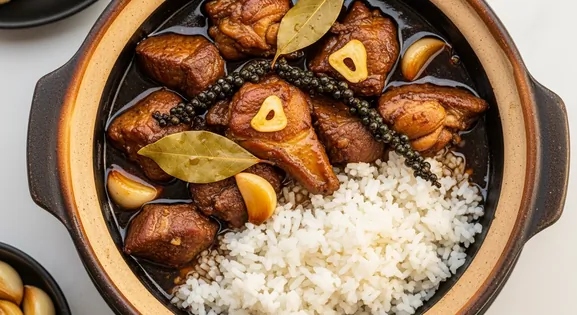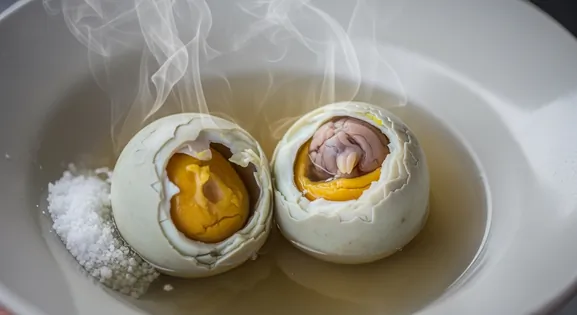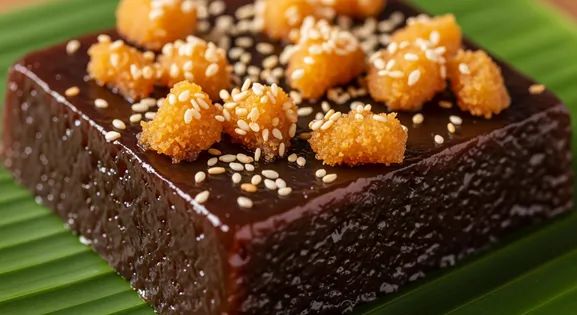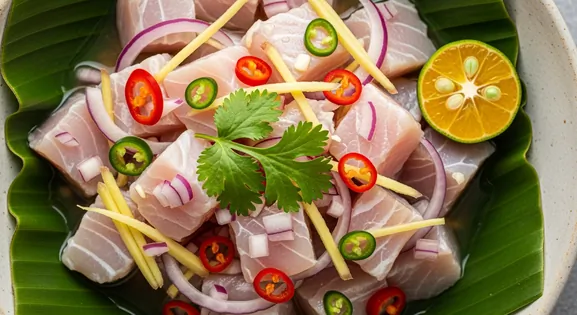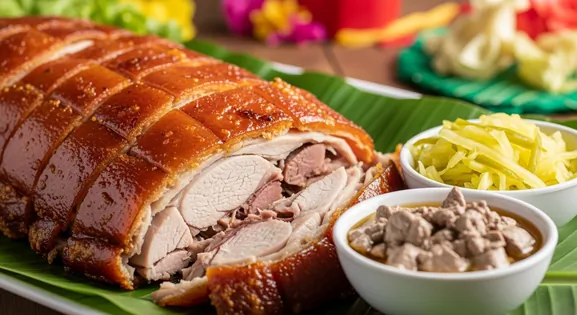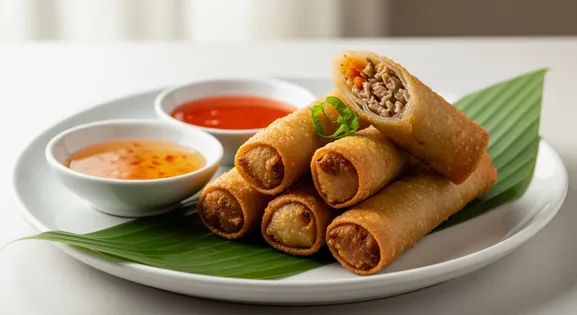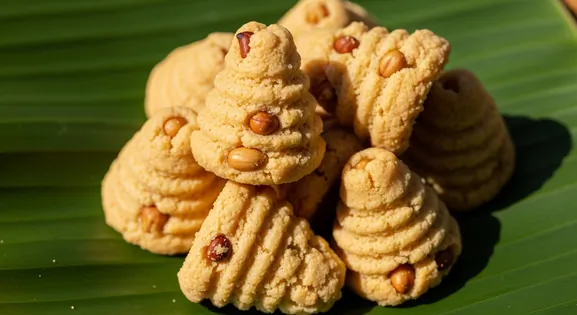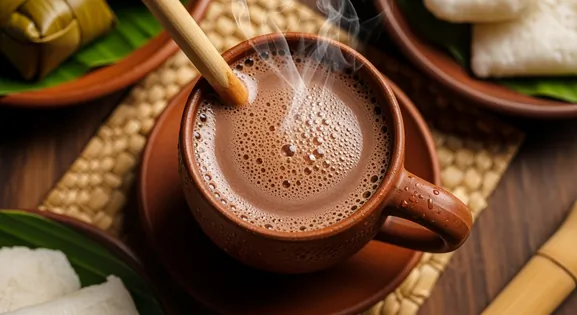Banana Cue in Philippines: A Complete Food Lover's Guide
Banana Q (Saging na Saba)
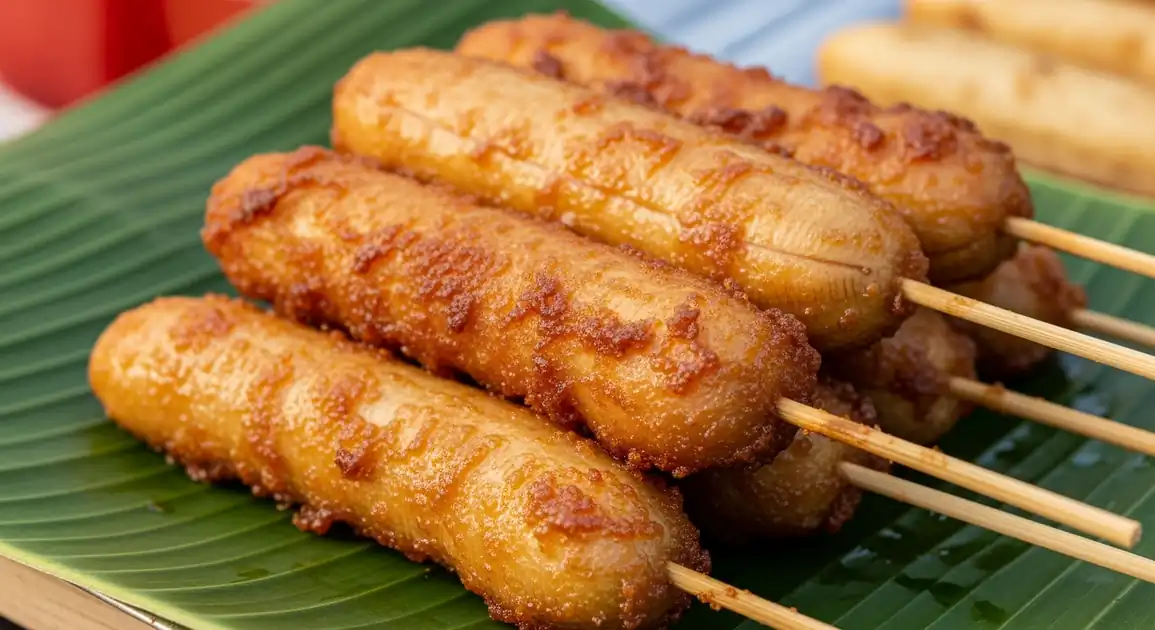
A Culinary Snapshot
Banana Cue is a beloved Filipino street food consisting of deep-fried Saba bananas coated in caramelized brown sugar and served on a bamboo skewer. The name is a play on barbecue (BBQ) due to its skewered presentation. With its golden-brown, slightly crunchy exterior giving way to a soft, sweet interior, this affordable treat is a staple merienda (snack) enjoyed across the Philippines at any time of day.
A Traveler's Guide to Authenticity
What to Look For
-
Freshly fried bananas with active frying station
Banana Cue is best consumed fresh. Look for vendors actively frying rather than those with large piles of pre-made pieces that have been sitting out.
-
Clean, clear to golden oil (not dark brown or black)
The quality of oil significantly affects taste and safety. Properly maintained oil should be relatively clear to golden, not excessively dark or smoking.
-
Proper sugar caramelization (golden to light brown)
Well-caramelized sugar should be golden to medium brown, creating a slightly crispy coating. Black or burnt caramelization indicates poor temperature control.
-
Bananas that hold their shape when skewered
Quality Banana Cue maintains its shape and doesn't fall apart when held by the skewer, indicating proper banana selection and cooking technique.
What to avoid
-
Very dark or smoking oil
Extremely dark, smoking oil indicates it's been reused too many times, potentially containing harmful compounds and giving a bitter taste.
-
Banana Cue with blackened or burnt exterior
Excessive burning indicates poor cooking technique and may contain acrylamide or other compounds formed during overcooking of carbohydrates.
-
Vendors with visibly poor hygiene practices
Avoid vendors who handle money and food without washing hands, or whose carts and utensils appear dirty.
-
Old, cold Banana Cue that's been sitting out for hours
Besides being less tasty, banana cue that has been sitting out for extended periods may develop bacterial growth, especially in humid conditions.
How to Order Banana Cue
Perfect Partners: What to Pair
Sago't Gulaman
Drink
A popular Filipino refreshment made with sago pearls, gelatin cubes (gulaman), and brown sugar syrup, often flavored with pandan. Its sweetness and refreshing coolness perfectly complement the warm, rich Banana Cue.
Fresh Coconut Water (Buko Juice)
Drink
A natural and hydrating beverage, fresh coconut water offers a light, subtly sweet, and slightly tangy contrast to the deep sweetness of Banana Cue. It's a refreshing palate cleanser.
Explore Banana Cue in Detail: City Guides
Discover where to find the best Banana Cue and learn local tips in these cities:
History and Origins
Banana Cue evolved from the Filipino tradition of creative snack-making using abundant local ingredients. While its exact origins are unclear, it became popular in the mid-20th century as an affordable street food. The genius combination of deep-frying the starchy Saba banana with brown sugar that caramelizes during cooking created a uniquely Filipino treat that has become a cultural staple and comfort food for generations.
Crafting the Perfect Dish
To make Banana Cue, ripe but firm Saba bananas are peeled, sometimes cut in half lengthwise for larger ones, and skewered on bamboo sticks. Brown sugar is either mixed directly into the hot oil or the bananas are rolled in sugar before frying. As the bananas fry, the sugar caramelizes, creating a distinctive sweet coating. The bananas are fried until golden brown with a slightly crunchy exterior while maintaining a soft interior, typically taking 3-5 minutes depending on the banana's ripeness.
Key Ingredients of Banana Cue
Saba Bananas
The star of the dish, Saba bananas are a starchy, firm cooking banana variety native to the Philippines. They hold their shape well when fried and offer a less sweet, earthy flavor that perfectly balances the caramelized sugar.
Quality indicator: Look for firm, ripe Saba bananas, typically yellow with some green, ensuring they are not overly soft or bruised.
Brown Sugar
Used to create the signature caramelized coating, brown sugar melts and adheres to the banana during frying, forming a sweet, slightly crunchy crust. Its molasses content contributes to the rich flavor and golden-brown color.
Quality indicator: The sugar should caramelize evenly to a golden or light brown, not burnt or crystallized, indicating proper temperature control.
Cooking Oil
A neutral-flavored cooking oil, typically vegetable oil, is essential for deep-frying the bananas until golden and for facilitating the caramelization of the sugar. The oil must be hot enough to cook quickly without soaking the bananas.
Quality indicator: The oil should be clean, clear, and free from dark particles or excessive smoking, indicating it's fresh and at the correct temperature.
Local Banana Cue Variations in Philippines
Classic Banana Cue
The traditional version with whole Saba bananas coated in caramelized brown sugar and skewered.
Jackfruit Banana Cue
Incorporates strips of ripe jackfruit alongside the banana for added flavor and texture.
Sesame Banana Cue
Rolled in sesame seeds after frying, adding a nutty flavor and extra crunch to the exterior.
Coconut Banana Cue
Coated with desiccated coconut after frying for additional texture and a tropical flavor profile.
Mini Banana Cue
Uses smaller pieces of Saba or cuts one banana into multiple pieces for bite-sized treats, popular for children or parties.
Dietary Information
Dietary Information
Important Note for Travelers: Your safety is our priority. Below are the common allergens associated with the traditional preparation of this dish. However, recipes and ingredients can vary significantly between establishments. Always confirm all ingredients directly with the food vendor before ordering, especially if you have a severe allergy.
Dietary Suitability
Frequently Asked Questions about Banana Cue
What is Banana Cue?
Banana Cue (pronounced 'kyoo') is a popular Filipino street food made from deep-fried Saba bananas coated in caramelized brown sugar. Skewered on bamboo sticks (hence the 'Q/cue' name), it's a sweet, filling snack enjoyed throughout the day, especially as a merienda.
Is Banana Cue healthy?
Banana Cue is moderately healthy as it contains nutritious Saba bananas (good source of potassium, fiber, and vitamins), but the deep-frying and caramelized sugar coating make it high in calories and sugar. It's best enjoyed as an occasional treat rather than a daily snack. For a slightly healthier version, look for vendors who use fresher oil and a lighter sugar coating.
How can I ensure quality when buying Banana Cue from street vendors?
You can make smart choices by observing vendor practices. Look for clean workstations, fresh oil (not overly dark or smoking), and vendors who prepare it fresh with good turnover. The high frying temperature generally ensures quality, and it's always best eaten fresh and hot.
What's the difference between Banana Cue and Turon?
Banana Cue uses whole Saba bananas coated directly in caramelized sugar and skewered. Turon is made with sliced Saba bananas (often with jackfruit) wrapped in spring roll wrappers before frying. Turon is crispier due to the wrapper, while Banana Cue has a softer texture.
Is Banana Cue vegan or vegetarian?
Yes, traditional Banana Cue is both vegan and vegetarian as it contains only Saba bananas, brown sugar, and cooking oil. However, some vendors might use lard instead of vegetable oil, so if you follow a strict vegan or vegetarian diet, you can ask 'Gumagamit po ba kayo ng mantika (vegetable oil) o manteca (lard)?'
What kind of bananas are used for Banana Cue?
Banana Cue specifically uses Saba bananas, a starchy cooking variety common in the Philippines. Saba is chosen for its firm texture that holds up well during frying and its less sweet flavor, perfectly complementing the caramelized sugar coating.
Expert How-To Guides about Banana Cue
How to Spot a Good Banana Cue Vendor
Select the best Banana Cue by observing these key vendor qualities.
- Look for vendors actively frying fresh batches rather than those with large pre-cooked piles.
- Observe the oil: It should be clear to golden, not dark brown or smoking, which indicates overused oil.
- Check their Saba bananas: Good vendors use ripe but firm Saba (yellow with some green, not overly spotted).
- Notice the sugar coating: It should be evenly caramelized (golden to light brown), not burnt or crystallized.
- Assess cleanliness: Clean frying station, utensils, and personal hygiene practices are essential.
- Gauge popularity: A good stream of customers usually indicates fresh, tasty product.
How to Eat Banana Cue Like a Local
Discover the authentic way to savor this beloved Filipino street snack, ensuring you get the most out of its unique texture and flavor.
- Eat it while still warm for the best experience of crispy exterior and soft interior.
- Hold it by the bamboo skewer - that's why it's there!
- Take small bites to avoid burning your mouth on the hot, melted sugar.
- Pair it with a cold drink like sago't gulaman or fresh coconut juice for balance.
- Use the provided paper or plastic bag as a holder to catch any drips of caramelized sugar.
- Save the skewer for proper disposal - vendors appreciate this courtesy.
Assessing Banana Cue Freshness and Quality
Learn to identify the best quality banana cue for optimal taste and food safety.
- Look for a shiny, still-glistening sugar coating rather than a dull, hardened appearance.
- Check that the banana is cooked through but not mushy (should hold its shape firmly).
- The ideal color is golden brown to medium brown, not dark brown or blackened.
- Fresh banana cue will still be warm to the touch.
- The aroma should be sweet and caramelized, without any burnt or old oil smell.
- The skewer should be clean and not soggy or discolored.
Our Commitment to Quality
At Tasteplorers, our mission is to provide the most accurate and useful travel information in the world. To achieve this, all content on this site is created through our unique editorial framework. We utilize leading AI research tools, guided by our proprietary prompts, and a multi-stage validation process. This entire system is overseen by our editorial team to ensure everything we publish meets our high standards for accuracy, cultural nuance, and practical value for travelers.
Learn more about our Editorial Process and our Mission.
Countries
Explore regions
Europe
Discover Europe's diverse culinary landscape, from Mediterranean flavors to hearty Alpine fare. Learn to navigate markets, decode menus, and eat like a local.
Latin America & Caribbean
Discover the vibrant cuisines of Latin America & the Caribbean. Our expert guide covers everything from Mexican street food to Peruvian ceviche and market tips.
Oceania
Explore Oceania's diverse food scene. Learn about Polynesian earth ovens, Fijian feasts, and the vibrant café culture of Australia and New Zealand.
Southeast Asia
Explore Southeast Asia's diverse food cultures from Thailand to Vietnam. Get expert tips on navigating spice levels, choosing quality vendors, and understanding the rich traditions of the region.
